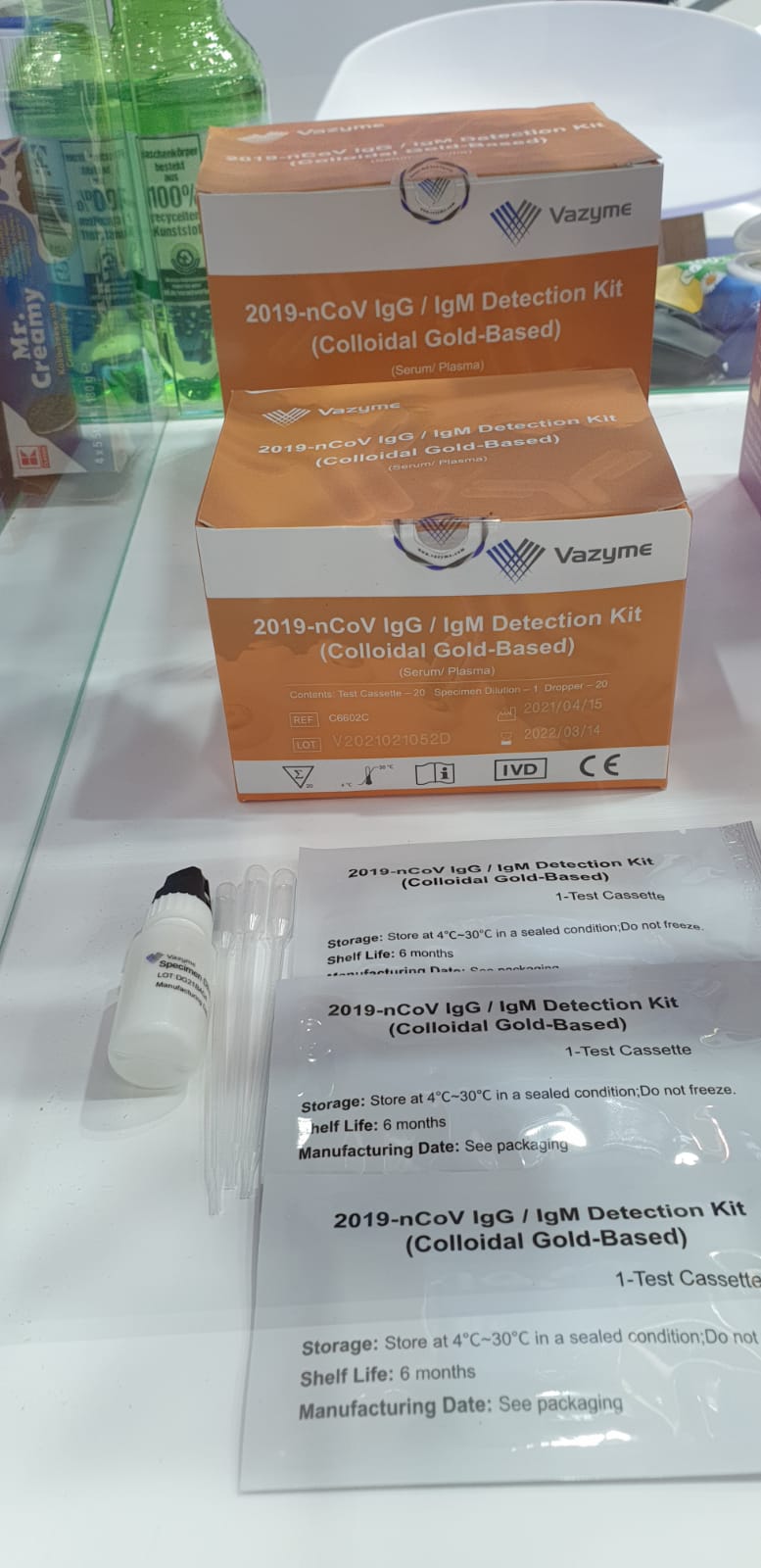Quality level: 100
Rehearsal: 0.0065% gold base (AAS)
Applications
electrophoresis: adequate
Absorption: 1 to 523nm
Storage temperature: 2-8°C
Chain of smiles: [Is]
InChI: 1S/Au
InChI key: PCHJSUWPFVWCPO-UHFFFAOYSA-N
Other notes
Widely used protein and polysaccharide marker for electron microscopy; Useful general stain for proteins immobilized on nitrocellulose membranes in spot tests or on blots prepared from polyacrylamide gels after electrophoresis
IgM and IgG antibodies
Both IgM and IgG are immunoglobulins produced by the immune system to provide protection against 2019-nCoV. Some patients with negative nucleic acid test results are positive for IgM, indicating that IgG/IgM detection is one of the effective methods for diagnosing 2019-nCoV.
The level of IgM antibodies begins to rise after 1 week after the initial infection, while IgG appears later than IgM (usually 14 days after infection) and can last for 6 months or even several years, which means that IgG serves as an indicator of the previous infection. Suspected patients who are infected by 2019-nCoV can be rapidly identified by simultaneous IgM and IgG monitoring. During the 2003-SARS and 2016-Zika outbreak periods, IgM/IgG antibody detection was used as one of the recommended diagnostic methods.
Advantages of IgG/IgM detection
- Indicate both recent infections and past infections, reducing missed detection rates.
- Low instrument requirement; suitable for primary hospitals and conventional outpatient clinics.
- blood test; low requirements for sampling; a special virus collection tube is not required.
- Suitable for detection combined with a nucleic acid test kit to improve the diagnosis rate of suspected patients.
Product Advantages
- Fast detection in 10 minutes.
- High detection efficiency: simultaneous monitoring of IgM and IgG.
- Detection without any equipment.
- Easy to operate, compatible with serum/whole blood/plasma.
- Storage at room temperature.
Interpretation of results
1. IgM positive, IgG positive: Indicates that it may be a recent infection with 2019-nCoV.
2. IgM positive, IgG negative: Indicates that it may be a recent infection with 2019-nCoV.
3. IgM negative, IgG positive: Indicates that it may be a previous infection with 2019-nCoV.
4. IgM negative, IgG negative: Indicates that there may be no infection with 2019-nCoV, or that there are not enough detectable antibodies in early infection.

